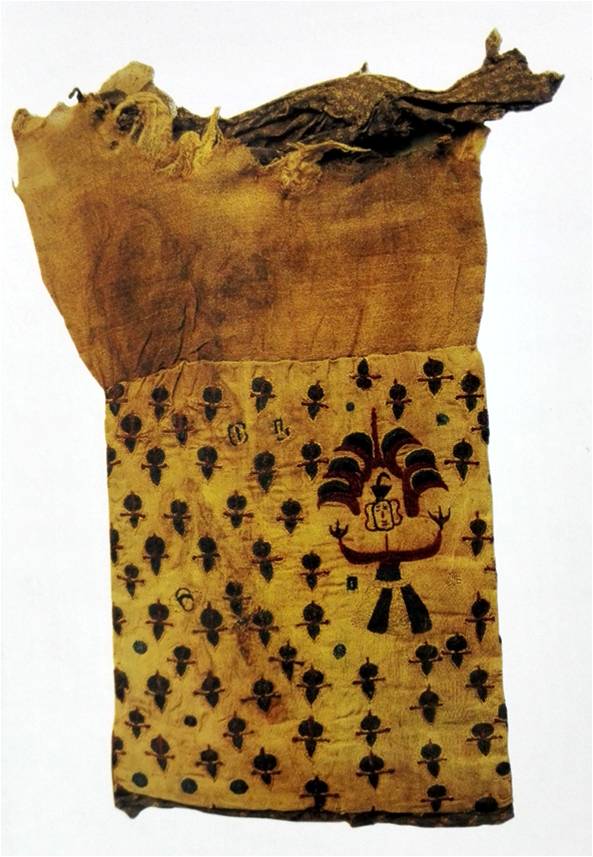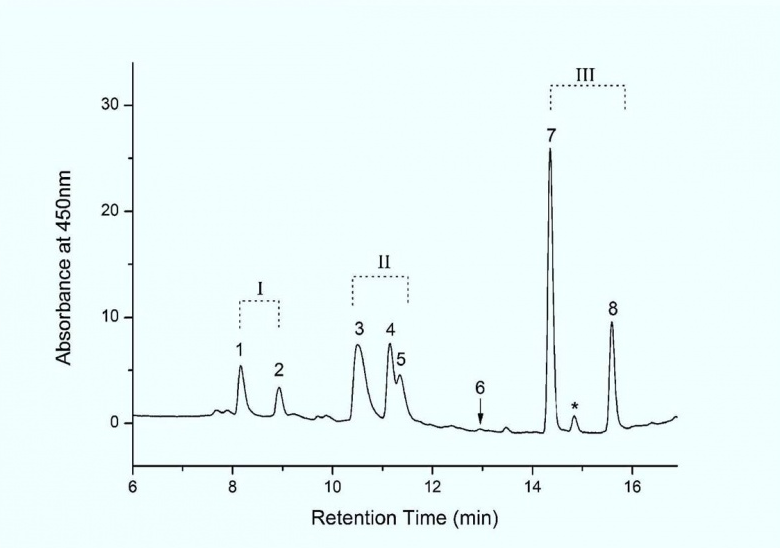CNSM 2710, Sleeve with embroidered figure and flowers, China (Northern Dynasties 386-581 CE)
Artifact Information
This object is a sleeve of robe with a figure and flowers. The patterns were embroidered with silk threads in red, brown, green and beige on damask. The figure wearing a red short jacket and a binary colored skirt stands among the flowers. A lining fragment was tie-dyed with hollow squares in rows [1].
China National Silk Museum, Hangzhou, China. #2710.
Analytical instrumentation and procedures
The dye was extracted from a thread (0.2-1mg) of the archaeological object in a solution of pyridine/water/1.0M oxalic acid as described by Mouri and Laursen [2]. The solution was evaporated to dryness under a nitrogen flow, and redissolved in 50 μL MeOH/H2O (1/1); subsequently, 20 μL of dye solution was injected onto HPLC column.
An extract was analyzed on an HPLC-PDA-MS system consisting of a Shimadzu LC-20A high performance liquid chromatography, a Shimadzu SPD-M20A photodiode array detector and a Thermo LTQ XL ion trap mass spectrometer. The separation was performed on a Shim-pack XR-ODS column (3.0 mm × 75 mm, 2.2-μm particle size) and a Phenomenex Luna C18 column (2.0 mm × 150 mm, 3-μm particle size). Columns were eluted with acetonitrile-water gradients containing 0.1% formic acid at a flow rate of 0.3 mL/min.
Summary of results
The main component of red dye is purpurin that was detected by HPLC method monitored at 450 nm. Two small peaks eluting between 16 and 17 min can be identified as pseudopurpurin and munjistin, respectively. It is suggested that the red yarns were most likely dyed withRubia cordifolia , which was widely grown in China, India and Japan.
HPLC profile
References
[1] [1] Xu X. Studies of samite with birds from Tibetan Tombs in Dulan of Qinghai. China Tibetology 1996; 1: 3-26.
[2] Richard A. Laursen and Chika Mouri "Decomposition and analysis of cathamin in safflower-dyed textiles", e-Preservation Science 2013, 10, 35-37.


